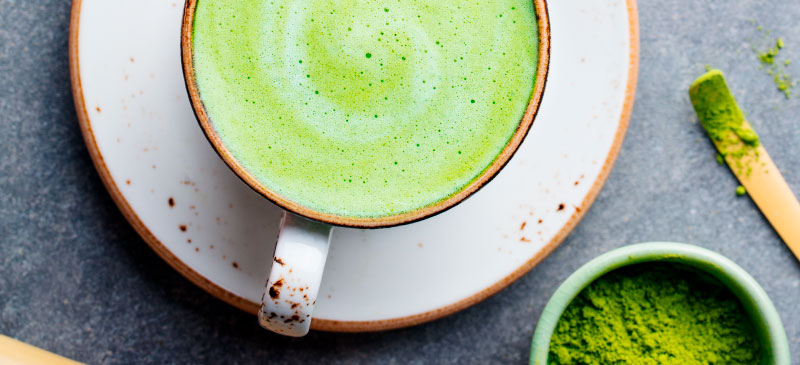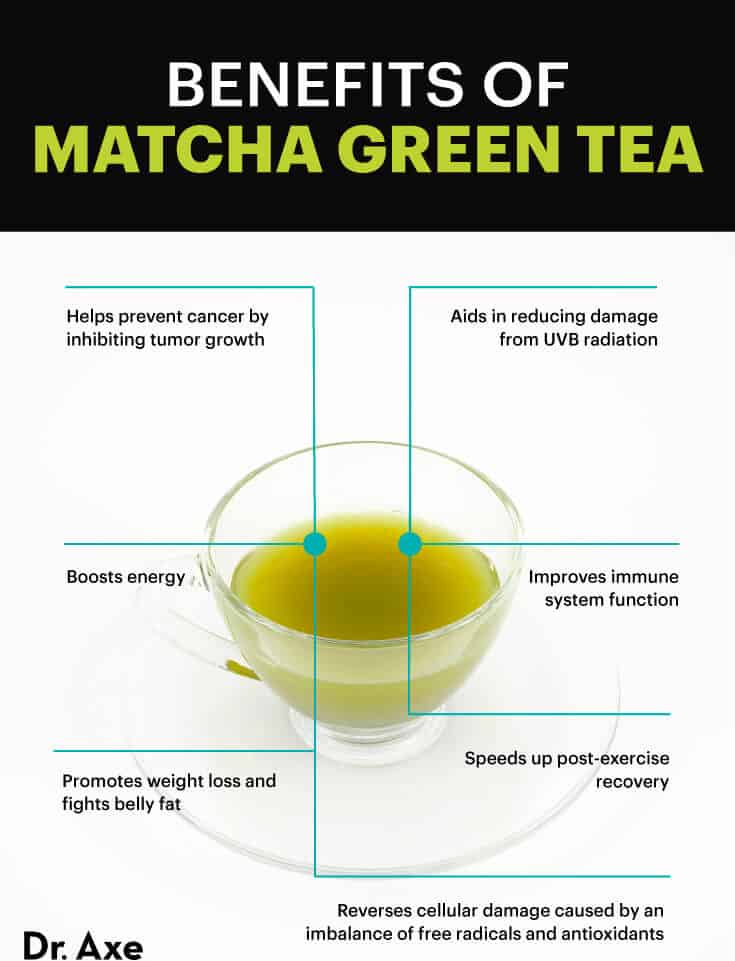This Dr. Axe content is medically reviewed or fact checked to ensure factually accurate information.
With strict editorial sourcing guidelines, we only link to academic research institutions, reputable media sites and, when research is available, medically peer-reviewed studies. Note that the numbers in parentheses (1, 2, etc.) are clickable links to these studies.
The information in our articles is NOT intended to replace a one-on-one relationship with a qualified health care professional and is not intended as medical advice.
This article is based on scientific evidence, written by experts and fact checked by our trained editorial staff. Note that the numbers in parentheses (1, 2, etc.) are clickable links to medically peer-reviewed studies.
Our team includes licensed nutritionists and dietitians, certified health education specialists, as well as certified strength and conditioning specialists, personal trainers and corrective exercise specialists. Our team aims to be not only thorough with its research, but also objective and unbiased.
The information in our articles is NOT intended to replace a one-on-one relationship with a qualified health care professional and is not intended as medical advice.
Matcha Tea Benefits for Fat Loss, Cancer & Much More
June 14, 2022

One of today’s trendiest beverages is called matcha, and the health benefits are astounding!
Heralded by top nutritionists, researchers and health-conscious celebrities alike, matcha is a green tea but stands alone. This high-grade, finely ground, concentrated green tea has been traditionally used in Japanese tea ceremonies for hundreds of years.
As both a fat-burner and cancer-fighter, matcha leaves other teas in its dust. In fact, numerous studies have shown that certain chemical compounds in matcha may help induce cancer cell death, neutralize harmful free radicals and enhance your body’s natural detoxification systems.
What Is Matcha?
Matcha is a concentrated powdered form of green tea that has been used for centuries in China and Japan. In fact, the term “matcha” and its pronunciation (maa-chuh) are derived from Japanese words meaning “ground” and “tea.”
Matcha is made from the leaves of the tea plant Camellia sinensis, an evergreen shrub of the Theaceae family. All tea comes from this plant, but the variations in color and taste are the result of differences in processing.
The tea plants that are specifically grown and used to make matcha are typically shaded for two weeks to increase chlorophyll levels before the leaves are picked. After harvest, the green tea leaves are steamed, dried and ground into a fine powder.
Unlike other types of tea, matcha contains the entire tea leaves, providing a more concentrated source of nutrients. It also has a strong, distinct flavor, which many compare to spinach or wheat grass.
The secret behind matcha tea’s super strength is found in its polyphenol compounds called catechins, which are a type of antioxidant found in superfoods like green tea, cocoa and apples.
Valued for being more catechin-dense than most foods, the health benefits of matcha tea generally arrive for those who regularly drink it. Potential benefits range from improved heart health to lower blood sugar levels, increased weight loss and beyond.
Benefits
1. May Help Prevent Cancer
Research has shown that green tea consumption could potentially reduce the risk of cancer. Some of the specific cancers that matcha has been shown to benefit include:
- Bladder cancer: A study of 882 women showed that the risk of bladder cancer was significantly reduced in women who consumed matcha.
- Breast cancer: A meta-analysis of multiple observational studies found that women who drank the most green tea had a 22 percent lower risk of developing breast cancer.
- Colon and rectal cancers: A study of 69,710 Chinese women aged 40 to 70 years old found that green tea drinkers had a 57 percent lower risk of colorectal cancer. An inverse association with regular tea drinking was also observed for rectal cancer.
- Prostate cancer: One large study found that Japanese men who drank five or more cups of green tea per day had a 48 percent lower risk of developing prostate cancer.
2. Promotes Weight Loss
Several promising studies have found that matcha tea benefits your waistline and could help promote and sustain long-lasting weight loss.
For example, one study in the American Journal of Clinical Nutrition found that drinking a tea high in catechins for 12 weeks led to significant reductions in fat mass, BMI, body weight and waist circumference compared to a control group.
Similarly, a review out of the Netherlands reported that the catechins found in green tea and matcha could help reduce body weight and maintain weight loss.
Other research has found that matcha could increase metabolism and boost fat-burning to help enhance long-term weight loss as well.
3. Benefits Exercise Performance
Clinical tests suggest that matcha green tea can help speed up muscle recovery in athletes whose focus is high-intensity workouts, like burst training.
It has also been shown to reverse cellular damage caused by oxidative stress, which could help prevent damage to the muscles and tissues.
An animal model published in Basic and Clinical Pharmacology and Toxicology found that administering EGCG to mice with chronic fatigue syndrome helped reduce markers of oxidative stress and inflammation caused by exercise.
Meanwhile, other studies show that pairing green tea with physical activity can increase energy expenditure, ramp up fat-burning, enhance endurance and reduce muscle damage.
4. Best Food Source of Disease-Fighting Catechins
According to a paper published by Harvard Medical School, green tea is one of the best food sources of a group of antioxidants known as catechins.
Catechins are thought to be even more powerful than both vitamins C and E in stopping oxidative damage to the cells. Antioxidants like catechins play a key role in health and disease, with studies showing that they could help protect against chronic conditions like heart disease, diabetes and cancer.
Research also shows that matcha tea is significantly higher in catechins than other types of tea, such as regular green tea.
In one study conducted at the University of Colorado, researchers reported that “the concentration of EGCG available from drinking matcha is 137 times greater than the amount of EGCG available from China Green Tips green tea, and at least three times higher than the largest literature value for other green teas.”

5. High Levels of L-Theanine for an Alert Calm
Matcha is said to induce a feeling of “alert calm,” thanks to the powerful combination of L-theanine and caffeine.
L-theanine is an amino acid found naturally in teas from the Camellia sinensis plant. By drinking matcha green tea, you can increase levels of L-theanine and promote alpha waves, which lead to a state of relaxed alertness.
L-theanine also helps to increase levels of dopamine and GABA (gamma-aminobutyric acid) in the brain, which could benefit conditions like anxiety.
Due to the conditions in which it is grown, it’s estimated that matcha tea may contain up to five times as much L-theanine as regular green tea.
6. Reduces Risk of Heart Disease and Hypertension
High in antioxidants and catechins, some studies show that green tea may help reduce the risk of heart problems.
In fact, one study in over 40,000 people found that those who drank more than five cups of green tea daily had a 26 percent lower risk of death from heart attack or stroke compared to those who drank less than one cup of green tea daily.
Other studies have found that green tea consumption could help lower cholesterol levels and reduce blood pressure to protect against heart disease.
7. Lowers Risk of Type 2 Diabetes
Making a few healthy changes to your diet and lifestyle is one of the best ways to prevent type 2 diabetes, and some research suggests that adding matcha to your routine may be especially beneficial.
For instance, one study published in the Annals of Internal Medicine found that consumption of green tea was associated with a lower risk of developing diabetes after adjusting for age, sex, body mass index and other risk factors.
Another study published in the American Journal of Clinical Nutrition found that green tea consumption decreased blood sugar levels and improved long-term blood sugar control. Not only that, but green tea also led to a significant reduction in insulin levels as well.
Related: Your Diabetic Diet Plan (A Guide for What to Eat with Diabetes)
8. Detoxifies the Body
Matcha’s rich green color is the result of its high chlorophyll levels. Chlorophyll is a type of plant pigment responsible for the absorption of light in the process of photosynthesis, which creates energy.
The fact that matcha is carefully shade-grown makes it significantly richer in chlorophyll compared to other teas.
In addition to giving matcha its signature vibrant hue, cholorophyll also aids in detoxification and can help promote the elimination of unwanted toxins, chemicals and heavy metals from the body.
For this reason, consuming a daily cup of matcha tea is a great detox drink — supporting your body’s natural ability to detoxify itself — and an easy way to boost your intake of cholorophyll.
Moringa is another superfood green powder that helps detoxify and even can be used in tea.
Where to Buy
Thanks to its growing popularity, there are many options for where to buy matcha tea, ranging from local grocery stores to health food stores, coffee shops and online retailers.
However, not all matcha is created equal. Here are a few quick tips to help you get the most bang for your buck and pick the best matcha powder possible:
- Check the ingredients label and look for a matcha powder that only contains matcha
- Opt for organic and non-GMO varieties whenever possible
- Ceremonial-grade matcha is ideal for making properly whisked tea while culinary-grade can be used to make tea, lattes, baked goods and smoothies
- Although you can find matcha in tea bag form as well, keep in mind that you won’t be consuming the whole leaf
- Matcha purity and quality do come at a cost, and a low price tag can often be a sign of a poor-quality product
- Although Chinese matcha is cheaper, it may be more likely to contain contaminants and pesticides than Japanese matcha
How to Make
The most straightforward and common way to use matcha powder is to make tea, but matcha tea is traditionally made in a very unique and specific fashion.
Directions can vary, but here is one easy method for how to prepare matcha tea properly:
- Fill kettle with fresh, filtered water and heat to just short of boiling.
- Fill matcha bowl or cup with hot water and pour out (to warm the bowl/cup).
- Add 1 teaspoon of matcha powder to bowl or cup.
- Add 2 ounces of nearly boiled water.
- Whisk (ideally with a bamboo brush or tea whisk) water and powder briskly for a minute or two until it looks thick and frothy with tiny bubbles.
- Add 3 to 4 more ounces of water.
Besides making tea, this versatile ingredient can also be used to make other foods such as matcha ice cream, smoothie bowls and baked goods like cake, brownies or cookies.
Looking for more ideas? These all include a hearty dose of health-boosting matcha green tea. Try one of these seriously delicious recipes:
Matcha vs. Green Tea
Many people wonder: Does matcha have caffeine? One of the biggest differences between matcha vs. green tea is its caffeine content.
In fact, matcha green tea is higher in caffeine than other green teas due to the fact that it contains the entire leaf of the tea plant. However, although it is significantly higher in caffeine than regular green tea, it is still much lower in caffeine than coffee or yerba mate, with around 70 milligrams per cup.
That being said, matcha green tea powder may not be a great choice if you are sensitive to the effects of caffeine. Although it gives more of a balanced, alert feeling due to the high levels of calming L-theanine, it’s best to keep intake in moderation and avoid around bedtime if you have any difficulty sleeping.
Risks and Side Effects
Because of its caffeine content, it’s also not recommended for children or those who are pregnant or breastfeeding.
Keep in mind that drinking green tea on an empty stomach can lead to stomach pain and nausea. It’s best to drink it after a meal, especially if you have any issues with peptic ulcers or acid reflux.
If you have iron-deficiency anemia, it’s important to note that green tea consumption can cause a decrease in the absorption of iron from food.
Unfortunately, lead contamination is a common concern with matcha and buying organic doesn’t always guarantee purity. Buying a Japanese matcha rather than Chinese matcha can help decrease the risk of lead exposure, but it’s still best to stick to just one cup per day.
Finally, green tea can interact with some prescription drugs, so check with your doctor before consuming matcha if you take medications or have any ongoing health concerns.
Final Thoughts
- What is matcha? Matcha is a concentrated powder form of green tea, which is made using the entire tea leaf.
- Because of the way that it is processed and produced, it’s thought to be higher in beneficial compounds like catechins and antioxidants than other types of tea.
- What does matcha tea taste like? It has a strong, distinct and earthy flavor that is often compared to spinach or wheat grass.
- Potential matcha tea benefits include increased weight loss, improved heart health, reduced blood sugar levels, enhanced detoxification, protection against certain types of cancer and increased feelings of calmness.
- There are plenty of options for how to make this tasty ingredient to take advantage of the many benefits of matcha green tea. Besides brewing the powder into a tea, you can also add it to baked goods, smoothies and desserts to boost the antioxidant content.












